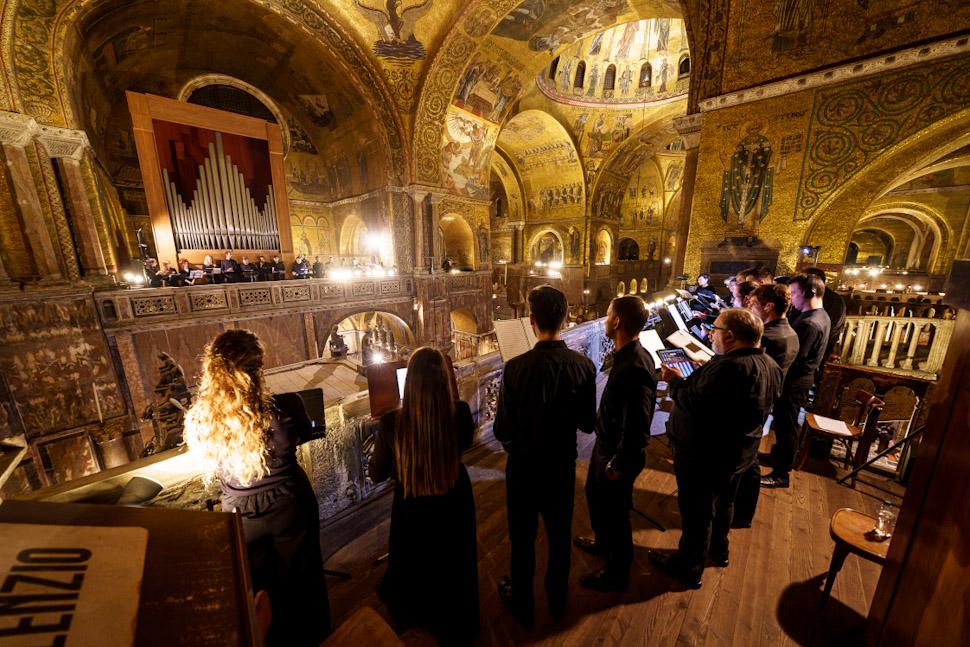| Lisa Streich: | Stabat (2017, 27’) for thirty-two voices in four choirs |
|---|---|
| Giovanni Croce (1557-1609): | Stabat Mater (1597, 10’) eight-voice sequence in two choirs |
| Giovanni Pierluigi da Palestrina (1525-1594): | Stabat Mater (1590 ca., 13’) eight-voice sequence in two choirs |
| Performers: | Cappella Marciana / Marco Gemmani, maestro di cappella |
| In collaboration with: | Basilica and Procuratoria of San Marco |
Lisa Streich / Giovanni Croce / Giovanni Pierluigi da Palestrina

LISA STREICH - STABAT
The concert programme takes its cue from Lisa Streich’s composition Stabat, a tribute to the figure of Mary through one of the most frequently set texts in the Christian tradition, Stabat Mater, the thirteenth-century sequence ascribed to Jacopone da Todi. Drawing her inspiration from the Roman polychoral music of the seventeenth-century, Streich shapes the listening space through the arrangement of the sound sources in a carefully chiselled work of chiaroscuro that delves into the meanderings of sound and silence.
Streich’s work dialogues with some of the greatest musical interpretations of the Stabat Mater, drawn from the great Italian polyphonic tradition of the late Renaissance. Giovanni Croce gave precedence to the purity and perfection of Palestrina’s polyphonic style over the expressive gestures of the late sixteenth-century madrigal. Stabat Mater dolorosa is the last work in his first book of Motetti a quattro voci. One of the best examples of the spiritual rather than dramatic vision of Jacopone’s sequence, however, is that of the late masterpiece by Palestrina, who in the last years of his life composed a Stabat Mater of crystalline polyphonic purity that restores the image of Mary at the foot of the cross not as the mother wrecked and painful but as the sublime witness of Christ’s transfiguration.